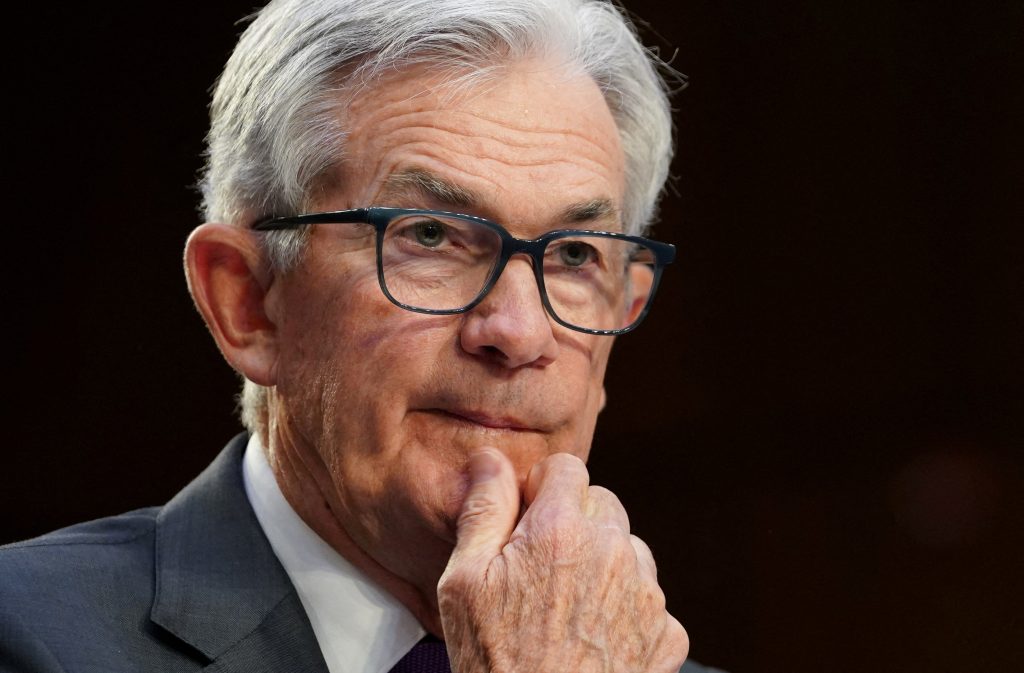The rolling banking crises in the United States and Europe have substantially complicated the tasks of central banks, especially the Federal Reserve (Fed) and the European Central Bank (ECB), which have made clear that their tightening regime to rein in inflation has yet to end. The Fed and several other central banks, including the Bank of England, will hold interest rate decision-making meetings this week amid a growing debate about how central banks should take into consideration the financial and economic impacts of banking crises in calibrating their tightening policy. Market uncertainty and volatility will continue so long as there are differences between what the markets expect and what central banks actually say and do. To help calm this crisis, they would be wise to think about their rate-setting power as more than just an inflation-fighting tool.
The ECB was the first major central bank to make a move during the crisis when it decided to raise key policy rates by fifty basis points (or half a percentage point) on March 16—consistent with its pre-crisis plan. President Christine Lagarde explained that the ECB will continue to focus on bringing down inflation to its medium-term target of 2 percent, making use of the interest-rate instrument to do so. The ECB, she added, will also closely monitor market tensions and be ready to use its policy toolkit to supply liquidity to the financial system if needed.
Several commentators, in particular former US Treasury Secretary Larry Summers, praised the ECB not only for raising rates as planned in the face of financial market turmoil but also for delineating monetary policy from financial stability concerns. “Lagarde gets an A+ today,” Summers said. Basically, in this delineation, monetary policy mainly uses interest rates to keep inflation under control, while financial stability problems can be addressed by another set of instruments including financial regulation and supervision, liquidity support, deposit insurance, and closing or staging buyouts of banks. This separation of policy goals and instruments is conceptually appealing, avoiding the problem of trying to use one instrument to serve multiple policy objectives.
Unfortunately, reality is too complicated and interconnected to allow such a clear-cut separation. Essentially, interest rates influence behaviors throughout the economy and financial markets. Or as then Fed Governor Jeremy Stein said ten years ago: monetary policy “gets in all of the cracks.” As a result, central bank interest-rate policy strongly influences financial behaviors, especially the appetite for risk. Low rates for long periods of time, as has been the case from the 2008 global financial crisis to the COVID-19 years, prompt a frantic search for yield, leading to an overvaluation of financial assets and elevating financial stability risks.
Subsequently, when inflation rises and central banks raise interest rates, this will create losses in fixed-income instruments and other assets, tightening financial conditions and slowing economic activity. If the volume of bonds accumulated by banks and other financial institutions is significant, the losses—both realized and unrealized—will also be uncomfortably large. These losses, coupled with slowing business activity, will be destabilizing to institutions with unstable funding bases.
Indeed, this is what has recently transpired in the United States. A combination of unrealized bond losses and generally unprofitable businesses, together with unstable funding, have brought down Silicon Valley Bank and Signature Bank and put severe pressure on First Republic Bank and several others in similar circumstances. US authorities have guaranteed large deposits at the two failed banks, launched the Bank Term Funding Program to lend against banks’ high-quality bond portfolios at face value (to avoid mark-to-market losses) for up to one year, and strengthened currency swap lines with five other major central banks to provide adequate supply of US dollar funding to foreign banks. In Europe, the Swiss authorities have moved quickly to broker a buyout by UBS of the inherently weak and unprofitable Credit Suisse, offering substantial liquidity support and guarantees of losses.
These actions have addressed the problems identified at specific institutions, but banking systems worldwide remain under market pressure: They still face the same underlying challenge of high interest rates. Moreover, pouring liquidity into the banking system would contradict to a large extent central banks’ effort to keep raising rates, while causing uncertainty in financial markets. Moreover, this crisis episode has shown that regulatory and supervisory tools are imperfect and unable to address financial stability concerns on a timely basis—in part due to the backward-looking nature of regulatory ratios. For example, Credit Suisse maintained its capital adequacy and liquidity coverage ratios above the levels required by Basel III launched in the wake of the 2008 crisis to the day it was acquired by UBS.
More importantly, by not doing enough to prevent crises, allowing them to materialize, and then trying to pacify markets with crisis management tools, central banks have inflicted substantial costs on society as a whole. Central banks’ reputation and legitimacy have also suffered—and will even more if their crisis management is not executed perfectly.
At present, market participants expect central banks, in particular the Fed in its March 22 Federal Open Market Committee meeting, to adjust their tightening strategy. After all, the banking crisis has caused a significant tightening of financial conditions, which is what central banks try to do by raising rates. Specifically, markets expect the Fed to either raise rates by twenty-five instead of its planned fifty basis points or pause tightening, with a rate cut likely to come later this year. Under the currently unsettled circumstances, the stakes are high: Disappointing market expectations could usher in additional selloffs in financial markets, especially of bank shares and bonds, possibly requiring more bailouts. On the other hand, the Fed needs also to communicate its intention to bring inflation back to its target in the medium term—a difficult but not impossible thing to do.
Going forward, central banks should be more transparent in explaining how they take into consideration the impacts of excessive risk taking as well as banking and financial crises when formulating monetary policies—both during the easing and tightening phases. It is difficult for central banks to balance controlling inflation with preserving financial stability, but that is no excuse not to try to the best of their judgement. Given what has happened, simply repeating the mantra that monetary policy is for dealing with inflation while regulatory and supervisory tools are for financial stability is doing a disservice to all stakeholders of the financial system.
Hung Tran is a nonresident senior fellow at the Atlantic Council’s GeoEconomics Center, a former executive managing director at the Institute of International Finance, and former deputy director at the International Monetary Fund.
Further reading
Thu, Mar 16, 2023
It’s not 2008: Keep calm as central banks carry on
New Atlanticist By Josh Lipsky
This week's financial drama may look familiar, but the world's financial firefighters have been preparing for this moment for nearly fifteen years.
Wed, Mar 15, 2023
Bailouts create a moral hazard even if they are justified. Is there another way?
New Atlanticist By Hung Tran
The US guarantee for Silicon Valley Bank and possible Swiss intervention for Credit Suisse raise important questions. Here's one alternative approach for large depositors.
Mon, Mar 13, 2023
The Fed’s tightening is a recipe for global volatility. Silicon Valley Bank’s collapse is just the start.
New Atlanticist By Martin Mühleisen
In this volatile environment, it may take less than a historic shock to cause severe disruption. Governments and central banks around the world better be prepared.
Image: Federal Reserve Chair Jerome Powell testifies before a US Senate Banking, Housing, and Urban Affairs Committee hearing on "The Semiannual Monetary Policy Report to the Congress" on Capitol Hill in Washington, U.S., March 7, 2023. REUTERS/Kevin Lamarque



